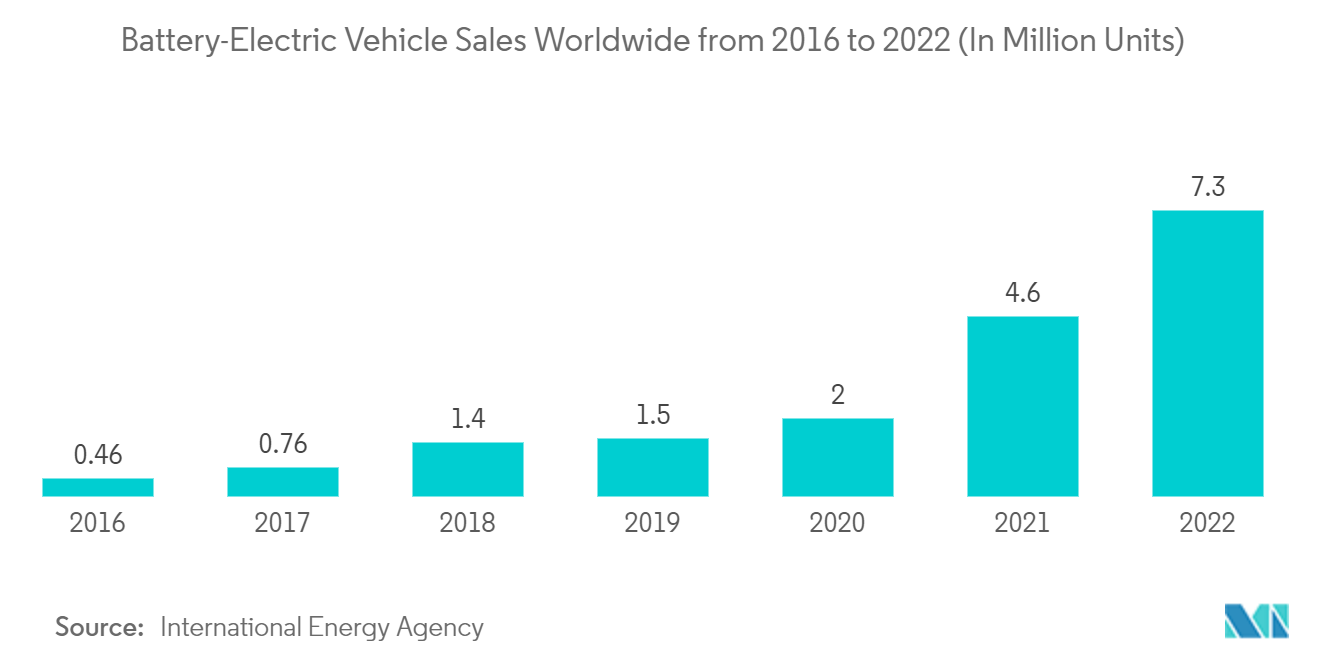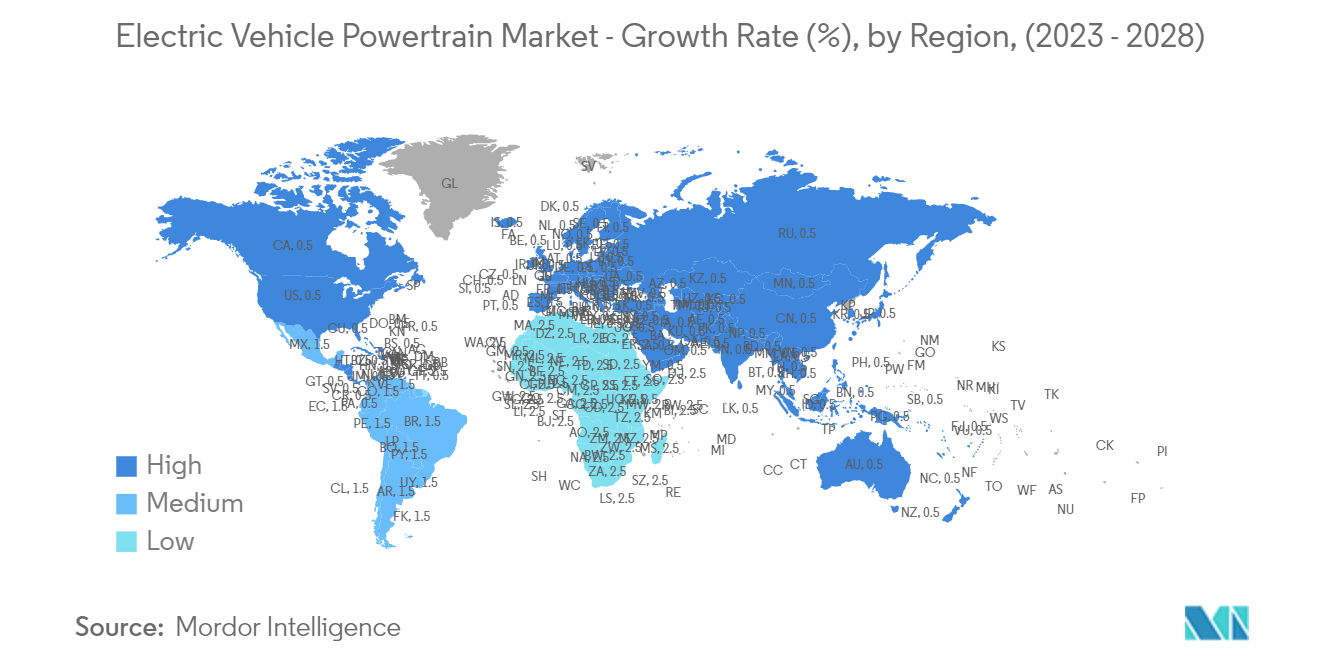Market Trends of Electric Vehicle Powertrain Industry
Increasing Sales of Electric Vehicles are Expected to Drive the Market
- The expanding market for electric and hybrid vehicles is a major driver for the automotive powertrain market. There has been tremendous growth in the electric vehicle market all over the world.
- The sales of electric vehicles are expected to rise, owing to a fall in the costs of batteries and technological improvements, like increased storage capacity, which has led to consumer adoption. As global temperatures are rising at an alarming rate, governments and industries worldwide have pledged to reduce greenhouse gas emissions.
- Global plug-in vehicle sales reached 2,986,659 units in 2020, as opposed to a lower 2,123,872 units of total electric vehicles sold worldwide. Battery-electric vehicle sales reached an estimated 7.3 million in 2022, up from around 4.6 million in 2021. BEV sales have soared due to a number of factors, including an increased consumer interest in more sustainable transport and governmental regulations to curb direct transport emissions. In 2021, these sales more than doubled compared to 2020, and 2022 marks a new record in all-electric sales volume. This clearly shows the rising trend of electric vehicle growth in the market and the projected increase in market opportunities for the electric powertrain market.
- The transportation sector has been one of the major focus areas, as transportation and mobility account for the second-largest share in emissions after electricity generation. The production and sales of electric vehicles globally have been growing rapidly, owing to a favorable regulatory environment, such as subsidies and tax exemptions for the industry and consumers in the European and Asia-Pacific regions.
- Governments of major automotive markets, such as China and India, have pledged to allow only electric vehicles on their roads by 2030. Major automakers have also increased their investments in the development of electric vehicles to cater to the anticipated growth in demand for such cars in the coming decade.
- For instance, in July 2023, Volvo Trucks Malaysia introduced the region's first fully electric Heavy Duty Prime Mover. The Volvo FH Electric, FM Electric, and FMX Electric models are powered by an electric powertrain with two or three motors producing up to 490 kW and 2,400 Nm of torque depending on the application, and battery capacity ranging from 180 kWh to 540 kWh from two to six battery packs, claiming up to 300 km of travel range on a single full charge at 44 tons gross combination weight (GCW).

China is Expected to Become the Largest Market for Electric Vehicles
- The electric vehicle market witnessed healthy growth in recent years. The adoption of electric four-wheelers in mature Asian markets will continue to be strong. In absolute terms, China will become the largest EV market. On its current trajectory, China's adoption rate will reach 60%, and the country will account for more than 40% of total new EV sales by 2030. This spike in sales is attributable to the regulatory norms imposed by various organizations and governments to control emission levels and propagate zero-emission vehicles.
- In many ways, Asian countries are at the forefront of climate change. Asia is home to 93 of the top 100 most polluted cities and six of the top ten climate-vulnerable countries. The region faces relatively high energy demand as many countries continue to grow and urbanize. China alone consumes more than three times the total energy used in Europe, complicating the country's efforts to achieve net zero energy consumption.
- It forced the automakers to increase their expenditure on the R&D of electric vehicles, eventually allowing them to market electric cars in the future. This strategy strongly impacted people, as there was a considerable change in the purchase pattern from conventional IC engine vehicles to electric vehicles. The difference did not decrease the sales of IC engine vehicles but created a promising market for electric cars in the present and future.
- Asian brands account for a sizable portion of consumer automotive spending in the region, and similar trends are emerging in EVs. Chinese brands have established strong positions in the E4W market. China's BYD increased its market share by 5% in 2021, and Wuling's popular and affordable Hongguang Mini EV sold more than 400,000 units within a year of its debut. Between 2017 and 2021, Asia produced 13 of the top 20 selling EV brands.
- Governments across Asia-Pacific have initiated various schemes, encouraging buyers to choose electric vehicles over conventional ones. Countries like India, China, Korea, etc., have multiple incentives for people willing to buy electric cars.
- For instance, in May 2022, the Beijing government released the "Action Plan for Comprehensive Traffic Management in Beijing in 2022". According to the action plan, Beijing will popularise low-carbon energy modes of transportation, accelerating the transition from gasoline to electricity on vehicles such as buses, taxis, and other EVs.
- Therefore, the factors mentioned above are contributing to the growth of the electric vehicle powertrain market in the Asia-Pacific region.

